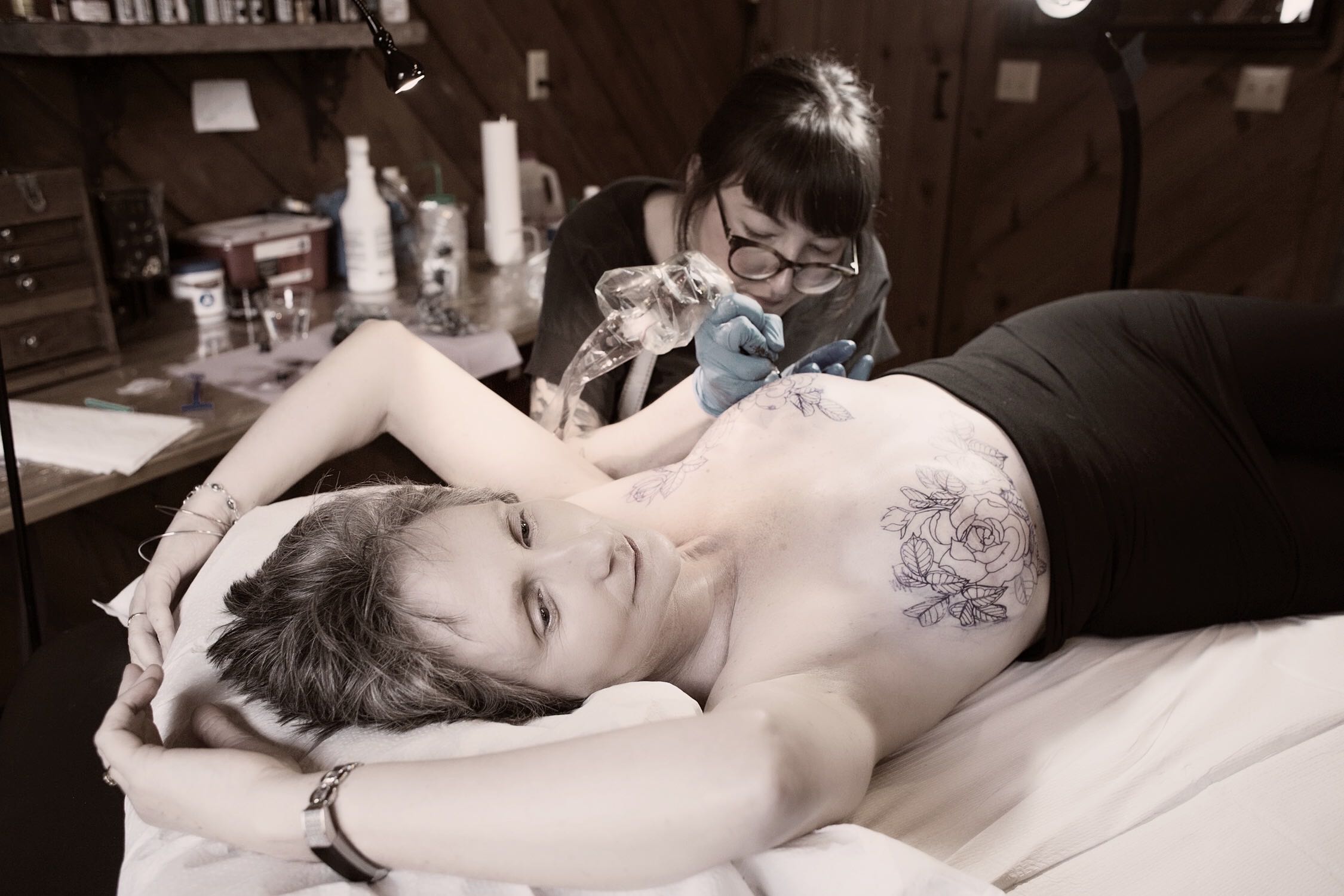
are these guru’s taking the piss ou quoi… ?

To create public awareness & debate around breasts

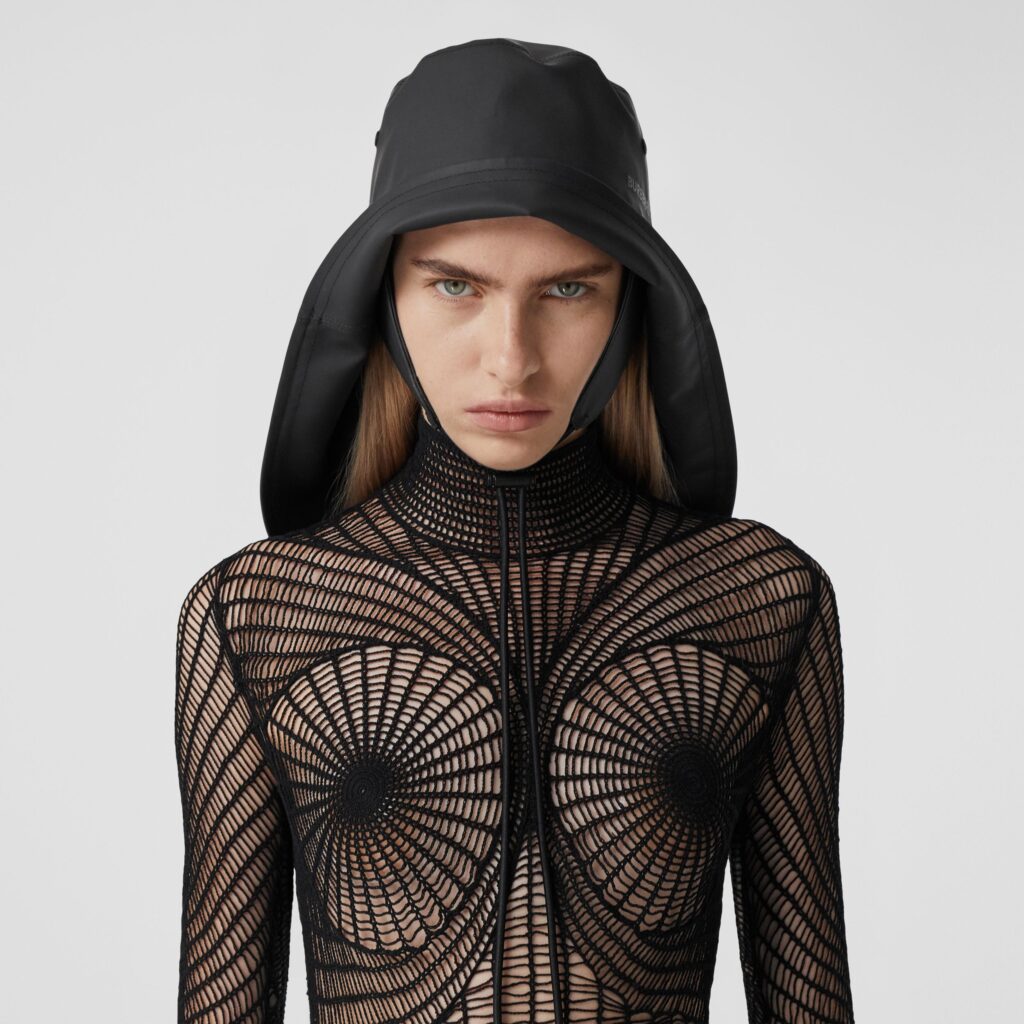


Today, 5thof February, is the day of St Agatha , patron saint of breast cancer patients, bell founders and even the eruptions of Mount Etna, anything breast shaped really.
The Sicilian Saint ( c.231-251 AD) lost her breasts at the hands of Quintianus, an alpha male Roman prefect, who had them cut off with large pinchers after Agatha repeatedly refused his marriage proposals.
Throughout the centuries artists have portrayed the defiant Agatha presenting her breasts on a plate. In that tradition we took this photo today, with one of our wax, breast shaped votives, to celebrate breasts and mourn the lost ones.
This image is dedicated to my fabulous friend Claire @adalodge, between us we have a left breast and a right one, making the perfect imperfect pair…
In 2002 the Feast of St Agatha in Catania, Sicily, was inscribed in the list of Unesco Intangible Cultural Heritage of Humanity. We were planning to be there today, but because of Covid we had to postpone our plans a year..

Ever since losing a breast, Absence is a theme that fascinates me and an appropriate one for this October Breast Cancer Awareness month;
For so many women the absence of one or two breasts has become a new normality. And whilst cancer and this loss is something no woman should have to deal with, I find it hugely encouraging to see that more and more women dare to embrace their asymmetric / flat physique and celebrate their new beauty instead of trying to comply with the symmetry of two undulations. Just to name a few ; @lessthantwobreasts @karlabarajasj @trineamazon @reneeridgeley @m_bee_w @thebooblesswonder @anna.bonny @deenametzger_author @jersibaker @adalodge
For me this breast-less sculpture of La Maliche by Jimmie Durham seems to talk about that absence, with a token bra trying to re-assure our expectations.
But this work addresses many more acutely relevant themes ;
At first glance this might look like a traditional Native American carving with beads, snakeskin and feathers. But at closer inspection it becomes clear that we’re looking at plastic hippy jewellery and a chain-store bra, the body an assemblage of recycled objects.
La Malinche was an Indian princess who was the mistress of a white man, and as such, this work could be interpreted as a symbol of sexual oppression and colonial domination. It comments on hybrid culture and questions the prejudices of the Western viewer – our desire to treat non-Western art as exotic ethnography and our readiness to accept stereotypical representations of indigenous people.
La Malinche 1988-91 by Jimmie Durham, Cherokee Indian artist, essayist, poet and political activist

Bathsheba’s Breast
Whilst temporarily confined to my bed with a recalcitrant lower back, I finally got to read “Bathsheba’s Breast” (2002) by Historian James S Olson.
Utilizing women’s voices across the centuries, Olson has created a truly accessible and captivating account of the history of breast cancer, looking at gender dynamics between female patients and male physicians, medical and technological developments, culture, economics, societal changes and politics.
“Breast cancer may very well be history’s oldest malaise, known as well to the ancients as it is to us. The women who have endured it share a unique sisterhood. Queen Atossa and Dr. Jerri Nielsen—separated by era and geography, by culture, religion, politics, economics, and world view—could hardly have been more different. Born 2,500 years apart, they stand as opposite bookends on the shelf of human history. One was the most powerful woman in the ancient world, the daughter of an emperor, the mother of a god; the other is a twenty-first-century physician with a streak of adventure coursing through her veins…” (dramatically evacuated from the South Pole in 1999 after performing a biopsy on her own breast and self-administering chemotherapy)—from Bathsheba’s Breast
In 1967, an Italian surgeon touring Amsterdam’s Rijks museum stopped in front of Rembrandt’s Bathsheba at Her Bath, on loan from the Louvre, and noticed an asymmetry to Bathsheba’s left breast; it seemed distended, swollen near the armpit, discolored, and marked with a distinctive pitting. With a little research, the physician learned that Rembrandt’s model, his mistress Hendrickje Stoffels, later died after a long illness, and he conjectured in a celebrated article for an Italian medical journal that the cause of her death was almost certainly breast cancer.
Detail of Bathsheba by Rembrandt, 1654
Anna Versteeg
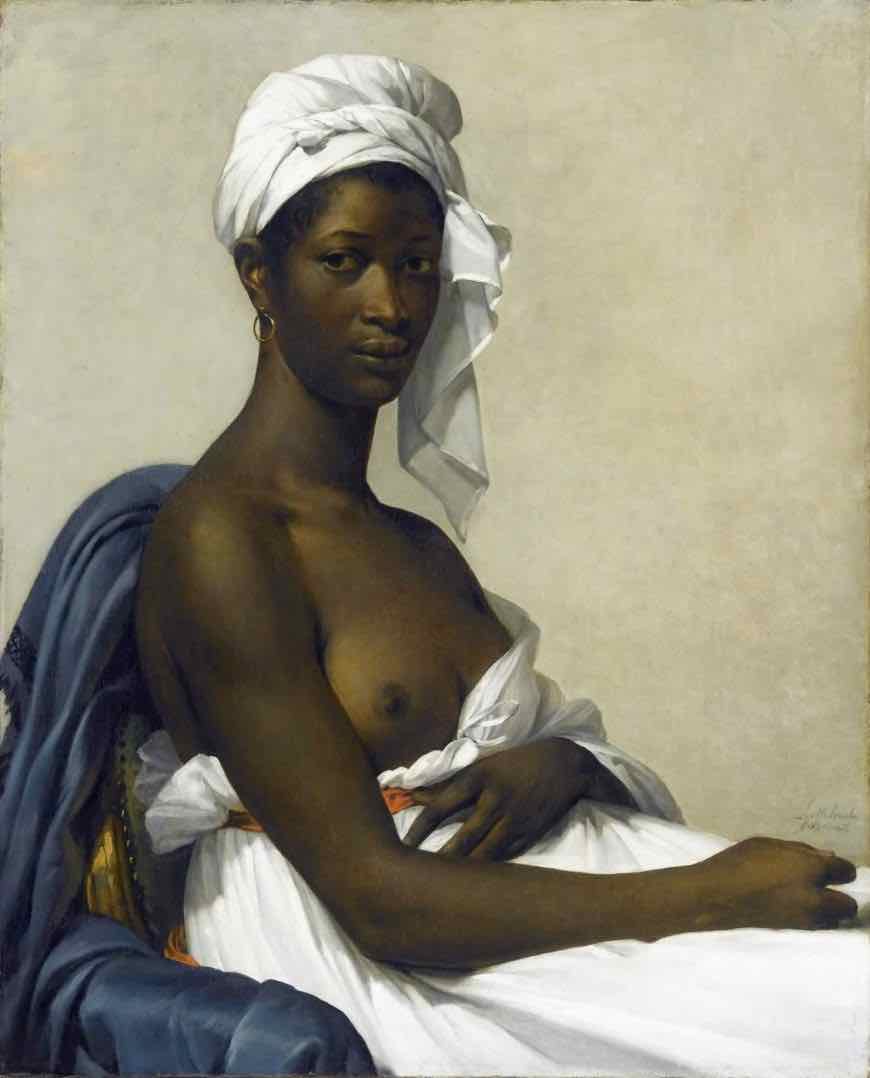
The current global lock-down, put in place to deal with the Corona pandemic, is grinding life as we knew it to a halt. Nobody knows how the world will resume after this crisis. The cynical predict an even bigger divide, the hopeful a stronger social cohesion.
But this is not the first pandemic to have disrupted society. The Black Death for example arrived on European shores around 1347 and returned several times during the decennia to follow.That pandemic ended up killing approximately half of Europe’s population, with no regard for people’s wealth, social standing or religious piety.
Historians argue that the phenomenal loss of lives and the radical disruption of Middle Age Society (social, political and religious) paved the way for the Renaissance (rebirth), a period (14th-16thcentury) of unparalleled ingenuity and productivity in the arts and sciences. The focus shifted from the divine to the human, as the classic Greek philosopher Protagoras noted “Man is the measure of all things”.
But the idea of “Man” was very white and the way black women were depicted in Renaissance art for example, testifies that other cultures were little understood and merely appreciated for their exotic otherness.
Black female bodies, servants to the wealthy white, seem to be depicted to emphasize the beauty of the milky skinned protagonists. Whilst the nude white female epitomises sensuality and beauty, the black female, often fully clothed, seems devoid of any sexuality or beauty. Black womanhood seems confined to “a space of functional and visual servitude to white beauty”.
As ‘Olympia’ by Edouard Manet from 1863 illustrates, this idea of white superiority became entrenched over the centuries and still persists.
Whilst it is hopeful to know that phoenixes can rise from the ashes of pandemic havoc, it’s our responsibility to ensure that these major inequalities are addressed in the process.
French artist Marie-Guillemine Benoist seems to have done exactly that. In 1800 she portrayed an anonymous woman of African descent in the same way as a well-off white woman would have been painted in those days. And although Portrait of Madeleine (formerly known as Portrait of a negress) was dubbeda “black stain” by the Salon Carrécritic, in conveying the beauty and humanity of the sitter, the painting seems to suggest that anonymous women and women of African descent are to be treated as equals.
(Benoist’s bare breast might have been a critique of the slave trade which was illegal on the French mainland but had still some advocates for reinstating it).
Anna Versteeg

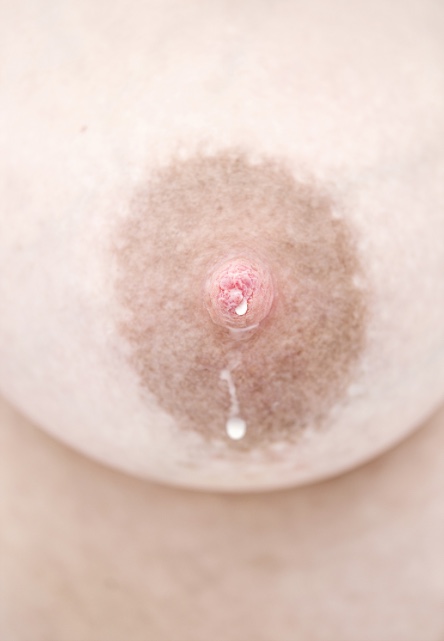
I remember that in 2011 an ice cream parlour in Convent Garden, London, started selling breast milk ice cream. It seemed rather decadent to me, with many mothers struggling to breastfeed their newborn. Shouldn’t any excess milk be donated to milk banks instead, helping babies in need?
But Mrs Hiley, who donated the milk and was getting £15 for every 10 ounces of milk, stated that it was a great “recession beater”. “What’s the harm in using my assets for a bit of extra cash?” she added. “I teach women how to get started on breastfeeding their babies. There’s very little support for women and every little helps.”
Photographer Ursula Groos is challenging our perceptions with ‘breast milk cheese ’ ;“Manufacturing cheese from mother’s milk is a taboo. It was in the early nineties that I first had the idea of manufacturing cheese from mother’s milk. I didn’t realize it at the time, but my idea became part of an ongoing discussion with my friends. What is this discussion about?
Many people’s first reaction to the idea: “That’s disgusting!”
But why do they react that way?
We eat cheese from cows, sheep and goats. In fact, we eat many different products from these animals’ milk. So, then why isn’t it completely natural and common for humans to drink human milk?
Is this a taboo with some inherent merit? Or is it just a matter of culture and education?
Culture, religion and education are major factors in our likes and dislikes, our acceptance and taboos, often on an unconscious level.” Ursula Groos
In 2010, New York haute cuisine chef Daniel Angerer had been struck by the same idea. Eight weeks after his wife gave birth and began freezing her excess milk, Angerer became curious as to whether human milk could be used in the kitchen.He began to experiment in using it to make cheese. He aged it for a fortnight before testing it – and was apparently amazed at its sweet taste. In the time the chef’s Klee Brasserie was selling it and using it in a range of upmarket dishes.
Photo’s ; Breast Milk Cheese 2016, Uschi Groos, Photography, Ugroos.de
Anna Versteeg

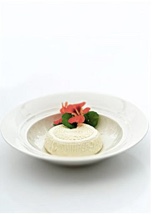
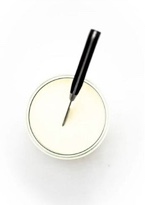
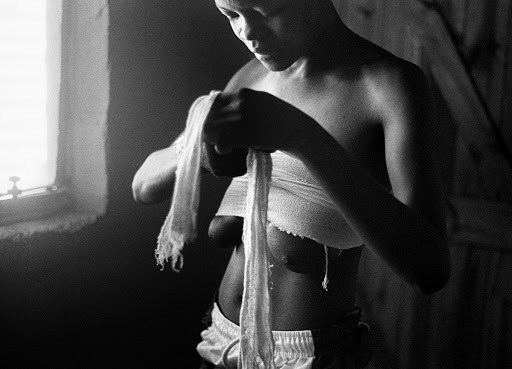
Visual activist Zanele Muholi’s self portraiture is commenting on South Africa’s black lesbian and transgender communityas well as taking from cinematic, surrealist and art historical cues.
The opening of the first major UK survey of Muholi’s stunningly beautiful and poignant work (the 29th April in the Tate Modern London) was going to be the highlight of this month for me…


I’ve always been intrigued by this female figure, which is part of a group of three rather flat and angular sandstone sculptures in the Bristish Museum. To quote Neil MacGregor, she looks like “she’s been shaped by a giant pastry cutter”.
The outlines of her body are very angular and the stone’s surface doesn’t show any detail, except for underneath her perfectly shaped hemisphere breasts, where the stone seems to be sagging into two soft pleads. Here nature seems to have taken over from the geometric abstraction, from perfection…
The statue, dated AD 900-1521 and carved of a single stone, comes from what is now Northern Mexico, which was the land of the Huastec people. They created a flourishing city culture, but were obliterated by the Azteks (late1500). Without any Huastec writings surviving, it seems hard to get anywhere close to an understanding of this statue.
The fleshy folds under the breast might indicate we’re looking at maturity, at a mother, . Maybe the three different sizes of the breasts refer to the different stages of Childhood, Womanhood and Old Age (innocence, maturity and wisdom)? Anyway, mother goddesses come in lots of shapes and have different roles.
The conqueringAztecs identified the Huastec mother-goddess with Tlazolteotl, their own goddess of fertility and sexuality.
Tlazolteotl, in Aztec language ‘filth goddess’ or ‘eater of filth’, is a figure of fertility, vegetation and renewal. She consumed dirt and purified it, transforming organic waste and excrement into healthy new life. And she did the same in moral terms, taking confessions of sexual sin in order to absolve them. (It seems that sex was highly regulated in Aztec society and sexual transgressions heavily punished.)
Sally Hewett’s stitched and embroidered pieces, arrestingly beautiful, make me think of the Huastec mother-goddess. In her work Sally explores and expresses the reality of our bodies instead of chasing and abstracted ideal. “My practice centres around ideas of beauty and ugliness and the conventions which determine our definition of each”.
The Huastec figurine comes to life where the angular stone dissolves into fleshy folds. Hewett documents the body as it is, recording it’s history, making us realise that scars, rolls and asymmetry are beautiful in themselves and worth being put on display and celebrated !
Anna Versteeg


Dear Boobs,
It’s been four years since you’ve been gone !!! Four. Fecking. Years!! They say time flies when you are having fun…..or NOT!
Personally, I think that time just flies. I’m flabbergasted that it’s actually that long ago, because so often, it feels like it was just yesterday.
Only the other day, I was trying on an outfit for the upcoming Christmas Poinsettia Ball, and when it came to zipping up the bodice…..Thelma and Louise were having NOTHING to do with that!! There was no budging them. Now….if it were you, my original boobs, I could possibly have smooshed and shoved, and zipped up that fecker. But no go.
T & L don’t really do that sort of thing. There’s only a small amount of smoosh, and very little shoving leeway with these two. Don’t get me wrong…..Thelma and Louise are pretty, and somewhat perky for an almost 52 year old.
But they are not you….my dear departed boobs.
So…..I had to send that outfit back, get a bigger one, have it altered, and chalk this up to another T & L experience. In the scheme of things…..it’s not bad, just another subtle reminder of how my body has changed since being diagnosed with breast cancer.
But then again, those reminders happen daily, not just with T & L, but with the aches and pains, the power surges and hot flashes, and the constant (but thankfully more distant) fear of recurrence, or worse….metastasis.
But my dearest boobs….life goes on. And despite the shite storm that blew my way four and a half years ago, my life has NEVER been better.
Someone I know, recently told me, that when he saw me for the first time in over a year…..he thought to himself…DAMN. She looks good. She must be “getting some”! Yes….he used those EXACT words.
Now….Thelma and Louise have YET to go on their maiden voyage in that respect. They (and I ) are most certainly NOT getting “some”. More’s the pity.
But, after I stopped laughing out loud, I explained to this person, that the “glow” he was seeing was NOT generated from any “nudge nudge, wink wink, say no more”….it was the glow of HAPPINESS coming from within ME……
I will leave you with a couple of quotes (big surprise there eh!);
“Mostly it is loss which teaches us about the worth of things.” Arthur Schopenhauer
“Grief does not change you, Hazel. It reveals you.” John Green
The loss of you, while devastating, revealed ME. The grief allowed me to focus on who I really was. I was not the sum of you, my Boobs, OR of my long red hair. Those things were not what made me beautiful, or strong. THAT was revealed in the way I faced the grief head on, and rewrote my own story. Which, if the Gods allow, I will continue to do for a LONG time to come.
So dearest Boobs, here’s to another year.
To be continued…..
Cora Fahy, A woman surviving breast cancer
Boobambassador Blog ; irishcora.wordpress.com
